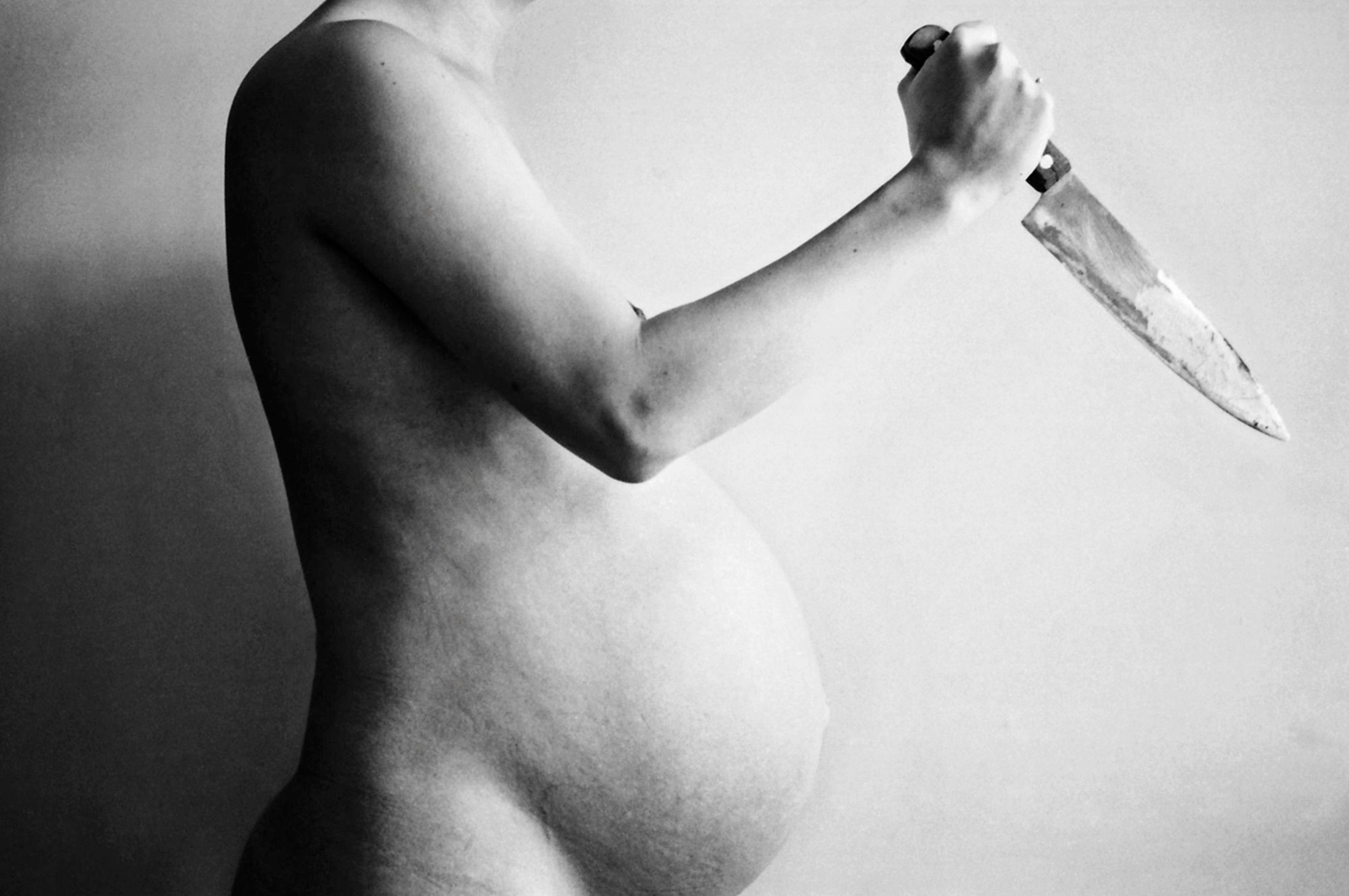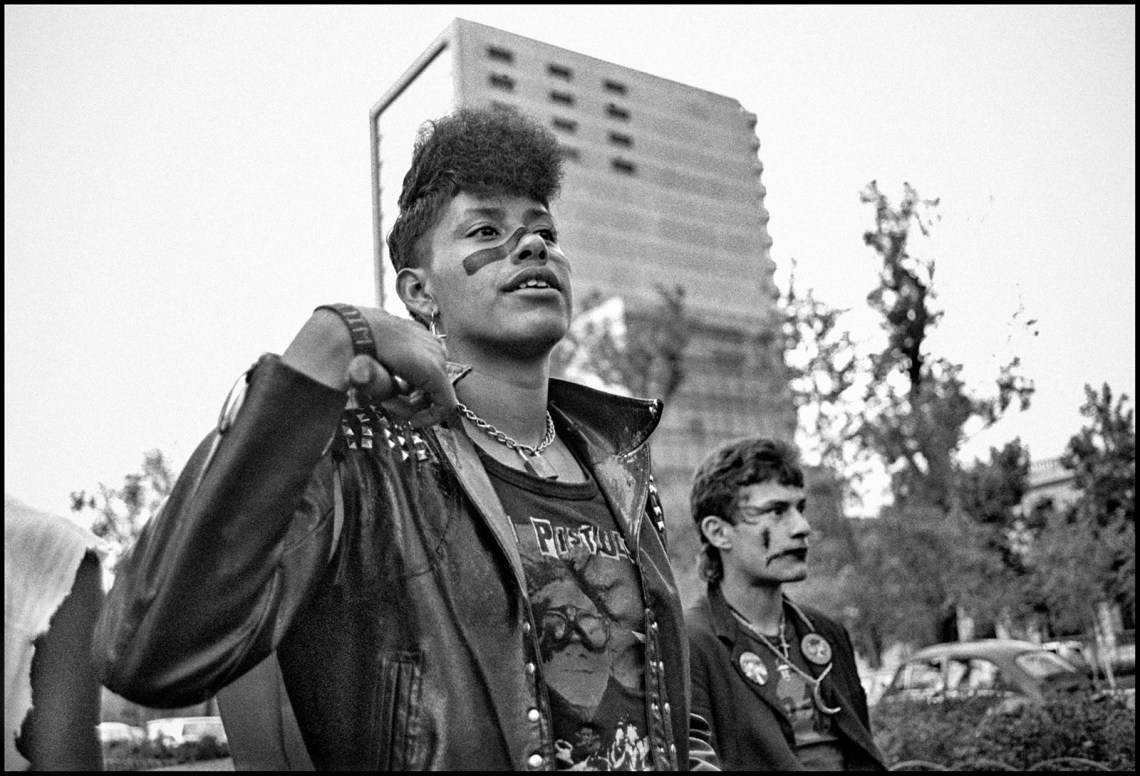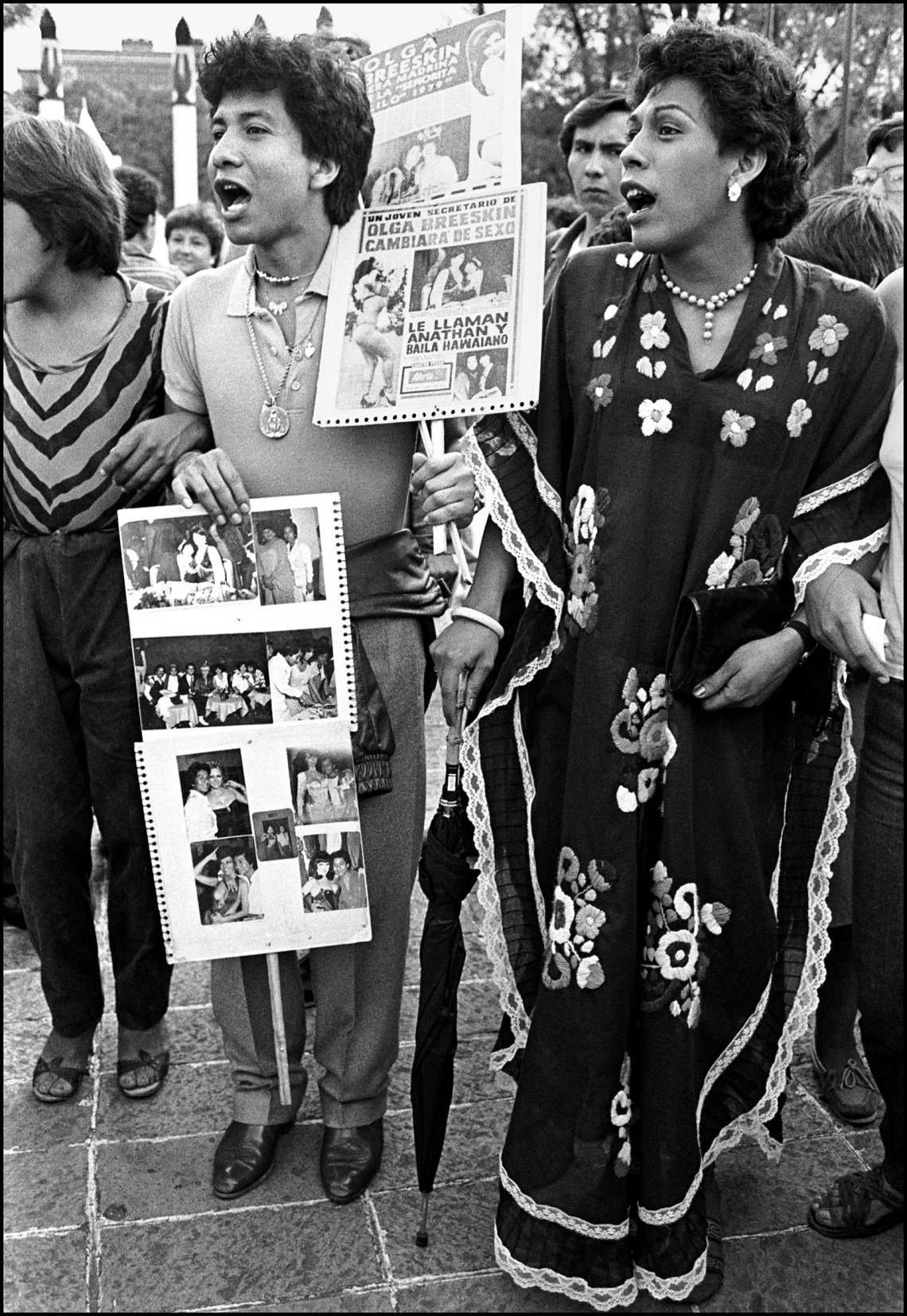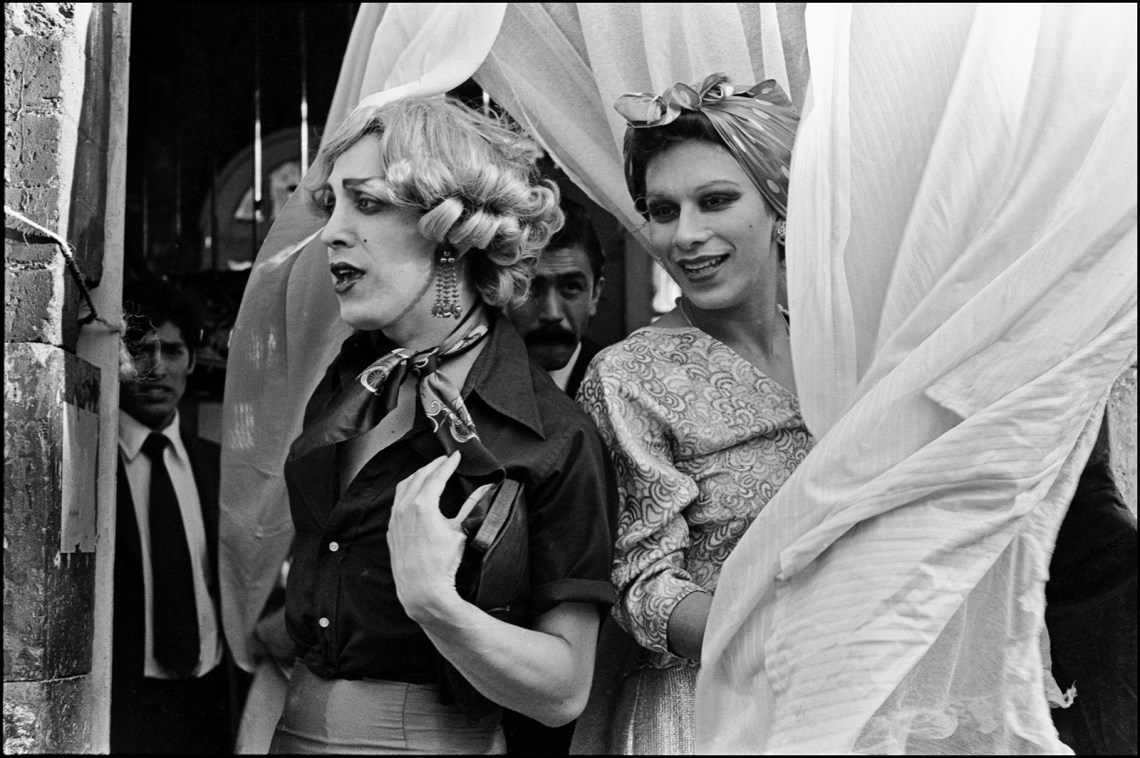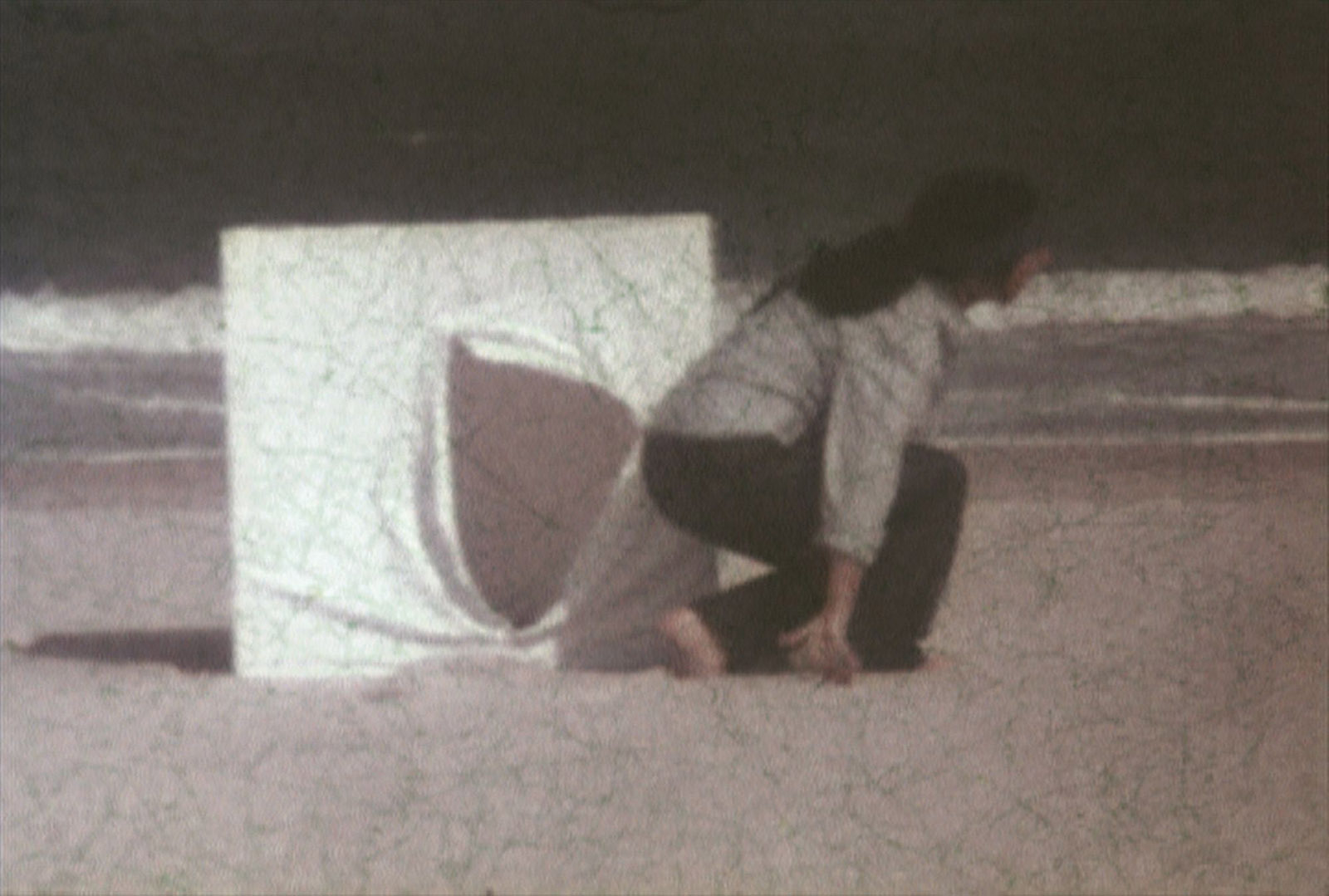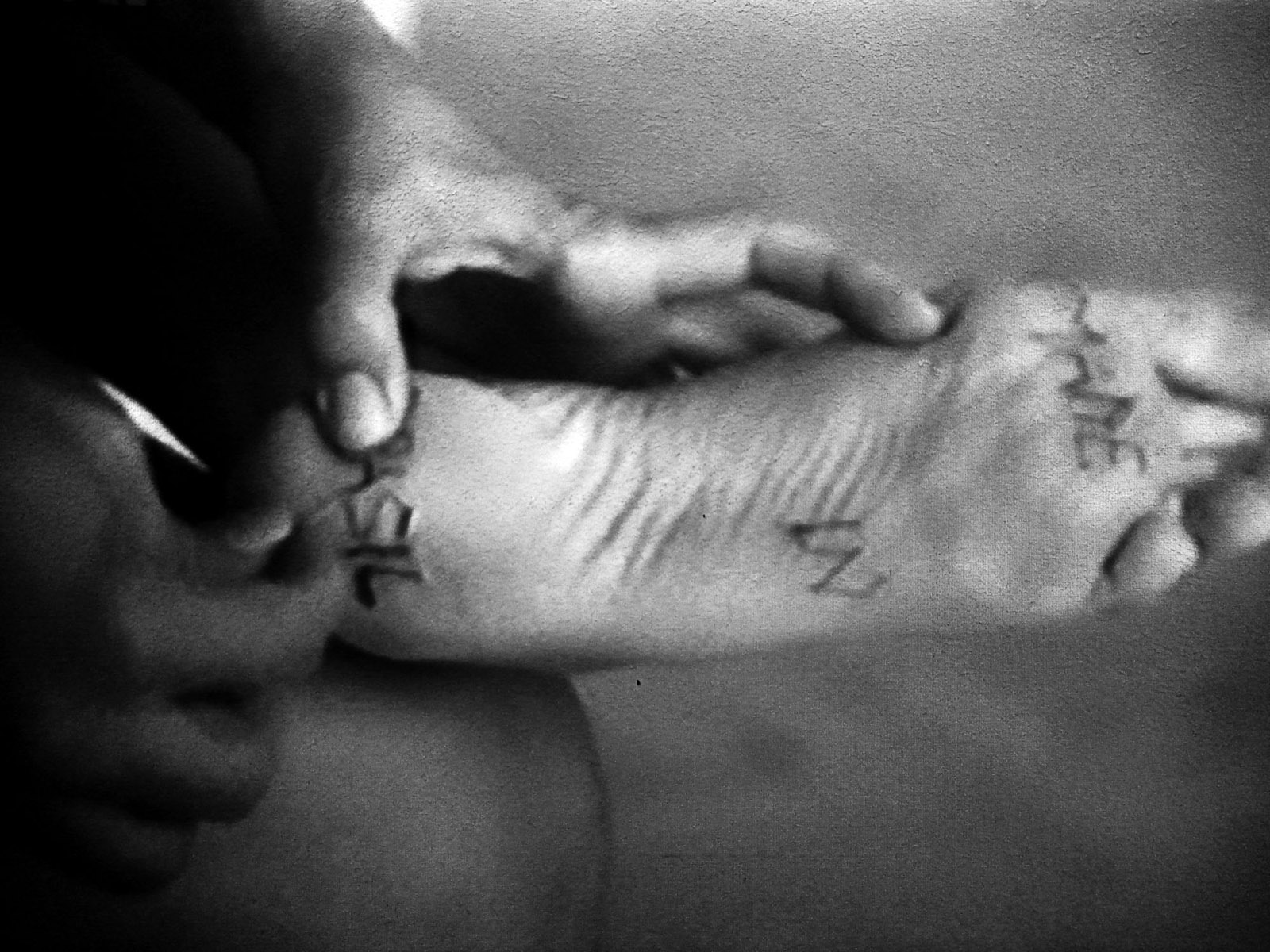In 1974, after a decade of life under military dictatorship, a Brazilian artist named Anna Bella Geiger made a video that runs sixteen minutes, eighteen seconds. It shows her head and upper torso against a white wall. Early on, she’s holding a white cat, but at some point, it jumps out of frame. Her expression is neutral, maybe a bit tired. Her eyes don’t seduce or challenge the camera. Other artists, her contemporaries, made images of themselves with their faces masked in plastic, enclosed in netting, covered in toothpaste, wearing a penis-shaped fake nose, or with strange objects snarled wildly in their hair. But she’s done none of that. The camera never moves or cuts away. She doesn’t speak. What statement is Geiger’s Statement in Portrait No. 1 making? It may simply be: I’m here. I don’t seek your approval.
Superbly curated by Cecilia Fajardo-Hill and Andrea Giunta, with Marcela Guerrero, “Radical Women: Latin American Art, 1960–1985” at the Brooklyn Museum offers an electrifying range of work by 123 artists who have in common a drive to assert the fact of their bodily existence in the world and who expect the world to receive that assertion as a radical political statement. As the show’s title indicates, the artists also share a couple of identity markers that form its framework. But the curators evince delight in pushing beyond them: the first sight that greets visitors as they step out of the elevator is a blow-up of Marcha gay, a 1984 photograph by Yolanda Andrade of two men with paint on their faces at a Mexico pride march. It’s also the case that “Latin,” like “American,” is a hugely capacious demographic tent that covers people of most backgrounds. Among the artists here are Geiger, daughter of Polish immigrants to Brazil, Victoria Santa Cruz, a Peruvian of African descent, Cecilia Vicuña, a Chilean transplant to New York whose work explores her indigenous heritage, Yolanda Lopez, a third-generation Chicana born in San Diego, California, Sophie Rivera, a Nuyorican born in the Bronx, Marisol, a Venezuelan who was born in Paris and died in Manhattan, and Lea Lublin, who was born in Poland and died in Paris.
The period Radical Women focuses on was a time of increasing gender equality, evidenced by the many women artists who emerged. But the story told by their artwork is more one of struggle and resistance than of progressive gain. The British art critic John Berger observed in his 1972 book Ways of Seeing that a woman “has to survey everything she is and everything she does because… how she appears to men, is of crucial importance for what is normally thought of as the success of her life.” This diagnosis (and the advertising images Berger used to support it) is indebted less to second-wave feminism than to the redefinition of masculinity in the heyday of Ian Fleming and Hugh Hefner as gratifying, masterly play, in which women were seen as a sort of consumer product.
All the artists in “Radical Women” reject the idea of the male gaze as the arbiter of female success, but there’s little agreement on what rubric to put that rejection under. A number of them did not call it feminism; they found it counterrevolutionary or counterproductive to focus on the liberation of only one gender—and they had a point. In our current moment of vehement racism against Latinos—Mexican men are “rapists,” MS-13 members are “animals”—Latina women equally endure the social consequences of such hate speech, and the government actions that accompany it (such as deportation, having their children taken away). No gender is exempted from state terror, and part of this show’s particular relevance to our time involves the intimate acquaintance with state terror that many of its artists had. While working with Brazil’s indigenous Yanomami community in the early 1980s, Claudia Andujar, whose father died in a Nazi concentration camp, shot a searing sequence of portraits titled Marcados (Marked) that depict individual Yanomami, men and women, their eyes blazing with mistrust, the numbers the government used to identify them hanging around their necks. ¿Dónde están? (Where are they?) is the title of a 1978 work by Luz Donoso that consists of a long, unspooling ribbon of portraits of men disappeared by the Chilean government during the five years that followed General Pinochet’s coup.
A number of the artists here, particularly those from Mexico and Argentina, did identify as feminist and worked to empower women. “Radical Women” emphasizes historical context, devoting the wallspace of an entire room to timelines for each of the fifteen countries represented; these remind visitors that women in the United States had been voting for forty-five years before some Guatemalan women first did so, in 1965. With respect to other feminist goals, the US lags behind. Argentina’s first woman president was inaugurated in 1974, and since then, Latin America has had a significant number of female heads of state. Last month, Colombia elected its first woman vice-president; Mexico City, the largest urban agglomeration in North America, has just elected its first woman mayor. The aspect of “Radical Women” that may seem most predictive of this ascent to political power, which has mainly taken place since 1985, is the sheer fearlessness of much of the work, the way the artists unabashedly stand their ground.
Advertisement
The result of a decade of wide-ranging, ground-breaking, and meticulous research, the show originated at the Hammer Museum in Los Angeles and has been rejiggered for New York to include three additional artists. But the major transformation, to my mind, is its juxtaposition here with Judy Chicago’s The Dinner Party (1974–1979), permanently installed since 2007 in the Brooklyn Museum’s Elizabeth A. Sackler Center for Feminist Art. The Dinner Party proposes an elite women’s academy where, within a large, womb-like chamber, thirty-nine artists, writers, activists, empresses, and goddesses are awaited at a triangular table set with personalized plates, often shaped and painted to suggest each woman’s vulva. It’s now quite hard to keep from noticing that none of the thirty-nine Great Women granted a place at Chicago’s elaborate table is from Spain, Portugal, or any of those empires’ former colonies in the Americas. Among those excluded by this symbolic history of women in Western civilization are La Malinche, Santa Teresa de Ávila, Sor Juana Inés de la Cruz, Gabriela Mistral, Frida Kahlo, Clarice Lispector, and so on.
In contrast to this “high church” conclave, the evocations of the sacred by the artists in “Radical Women,” a couple of whom studied with Chicago, are not much inclined toward the epic, the heroic, or the monumental. Their register spans the ordinary, the precarious, the experimental, the anonymous. And while sculptures, drawings, paintings, and installations are all here, the preferred mediums are the less material photography, video, and performance. In 1978, Yolanda Lopez made a series of photographic self-portraits as the Virgin of Guadalupe, symbol of Mexican Catholicism, except that she’s wearing shorts and sneakers, saluting the camera with an upraised fist, and laughing uproariously. A year later, in a piece titled Vaso de leche (Glass of Milk), Cecilia Vicuña tied a string around a glass, then tugged on it to spill the milk, in protest of the sale of contaminated milk that killed babies in Colombia. On March 11, 1981, Maria Evelio Marmolejo performed a ritual in a Bogotá gallery in which she greeted visitors naked and menstruating, leaving a trail of blood on the gallery floor as she walked and danced. A 1968 happening by Graciela Carnevale consisted of summoning people to an empty gallery in Rosario, Argentina, then locking them inside and leaving. (Someone eventually smashed in the front window to free them.)
As the title of Carnevale’s piece, Acción del encierro (Confinement Action) attests, all of the aforementioned works but Lopez’s are actions, not objects—actions presented here via photographic documentation, accompanied, in Vicuña’s case, by a handwritten poem. Berger viewed the camera and its increasing prevalence in everyday life as a powerful instrument of the male gaze; he also thought the camera made art “ephemeral, ubiquitous, insubstantial, available, valueless, free.” Much of the work in “Radical Women” seizes on the second of these observations in order to reject the first.
Detractors sometimes accuse Anglo-American feminism of ignoring maternity or being anti-maternal. In “Radical Women,” birth and motherhood are powerful and recurrent themes, often represented with terrifying ambiguity. The womb is not a place of static safety but a painful portal to danger and perpetual transformation. For Barrigas (Bellies) (1979-83), Peruvian sculptor Johanna Hamann formed large, empty, misshapen half-spheres out of plaster and resin, draped them with tattered, dirty gauze, and hung them from meat hooks where they appear to be decaying. A 1986 photographic self-portrait by Cuban Marta María Pérez Bravo, part of a series titled To Conceive, shows her from the neck down, confronting the huge jut of her own pregnant belly with the blade of a kitchen knife. The geometric symmetry of the two curves arcing away from each other underscores the textural contrast between flesh and steel, yet the work need not be read as an opposition between life and death: the common household tool the mother holds might be used to perform a C-section, cut the umbilical cord, prepare food for the child’s nourishment, ward off attackers. But the position of the blade in the mother’s hand suggests it might also represent everything beyond the womb that threatens the unborn life stirring within, up to and including maternal love itself, or its absence.
Advertisement
The show’s last and smallest room contains only two screens. On one, in a video documentation of her 1967 installation O Ovo (The Egg), Lygia Pape slowly pushes her way out of a cube of stretchy fabric on an empty, windswept beach. The second screen shows a series of twenty-one photographs documenting Passagem (Passages), a 1979 performance by another Brazilian, ceramic sculptor Celeida Tostes, who covered her body in wet clay, then had two white-clad assistants seal her into a large urn of unbaked clay. Eventually, when she could take it no longer, she tumbled out.
El mundo de la mujer (The World of Women), a short 1972 documentary by the Argentine filmmaker Maria Luisa Bemberg, founder of Argentina’s Feminist Union, sums up all the horror of the era’s particular gender dystopia. It was made at Femimundo, a vast 1972 trade fair whose male backers were selling their own vision of female empowerment. “It’s a universe that thinks only of you,” a male voiceover reading copy from the fair’s catalogue caressingly intones. “The country’s largest companies work because of you and on your behalf… Women are the most powerful consumer force in the contemporary world.” The fairgoers gape at models in bikinis who’ve done all they can to resemble the smooth, hard plastic mannequins they share the sets with. Women purchase bust-firmers, thigh toners, saunas, creams, cosmetics, and kitchen appliances. Children look around in bewilderment. A female voiceover chirps advice: “Be romantic and undemanding, be simple and genuine, prepare exquisite meals, always preserve a little mystery, be passionate when he wants you to be but don’t ever expect the same…”
The women’s buying power, the film suggests, has one purpose only: to make them into more desirable products for the men to consume. This cautionary tale of putative female “empowerment” as just another instrument of male power was foreboding. Two years after the documentary was made, President Juan Perón died, and Isabel Martínez de Perón, his wife and vice president, became the Americas’ first woman president. For most of the twenty-odd months of her rule, before the generals who went on to wage the Dirty War deposed her, she remained under the Rasputin-like control of her fascistic minister of social welfare.
The late art historian Linda Nochlin titled an influential 1971 essay “Why Have There Been No Great Women Artists?” It famously concluded with a critique of that very question. “Art is not a free, autonomous activity of a super-endowed individual.” Since the artists here are fiercely resisting their own commodification, it’s hardly surprising that they were little concerned with producing what Berger calls “marvelously made objects” with a mystique of ponderous greatness that would make them marketable to billionaires and oligarchs. Stapled to the wall of one gallery is a sheet of paper that says, “The space of this exhibition is in your mind, make your life your art.” It’s part of a 1970 installation by Peruvian experimentalist Gloria Gómez-Sánchez that includes a table stacked with manifestos about the dematerialization of the art object, the priority of ethics over aesthetics, and how art was becoming more like a poem or an essay in its attempts to reshape consciousness. Shortly after creating it, Gómez-Sánchez abandoned art-making altogether.
Some of the names in the show—Ana Mendieta, Lygia Pape, Judy Baca, Bemberg, and Vicuña, whose major installation Disappeared Quipu (2018) is separately on view downstairs—are more recognizable than others, but the star power of the “great artist” simply isn’t in play. The sensibility is collective; the works are displayed on an even footing and have been chosen only for what they can contribute to the dynamic conversation “Radical Women” invites its viewers to share in. In one of the final galleries is a piece that seems a kind of reply to Geiger’s Statement in Portrait No. 1. Two large screens show the heads of Jennifer Hackshaw and María Luisa González, of the two-person artists’ collective Yeni & Nan, active from 1977 to 1986. Titled Transfiguración elemento tierra (1983), the two videos show the artists’ faces staring into the camera silently and without expression. Their heads are plastered in wet mud. Little by little, the viewer notices that they don’t ever blink, not once, though the videos run for more than eight minutes; to achieve this, both artists trained in Trāṭaka, a form of disciplined meditation. “Men look at women. Women watch themselves being looked at,” John Berger wrote. The radical, unyielding intensity of Hackshaw and Gonzalez’s transfixed twin gaze does not conceive of being looked at. It sees.
“Radical Women: Latin American Art, 1960–1985” is at the Brooklyn Museum through July 22.

